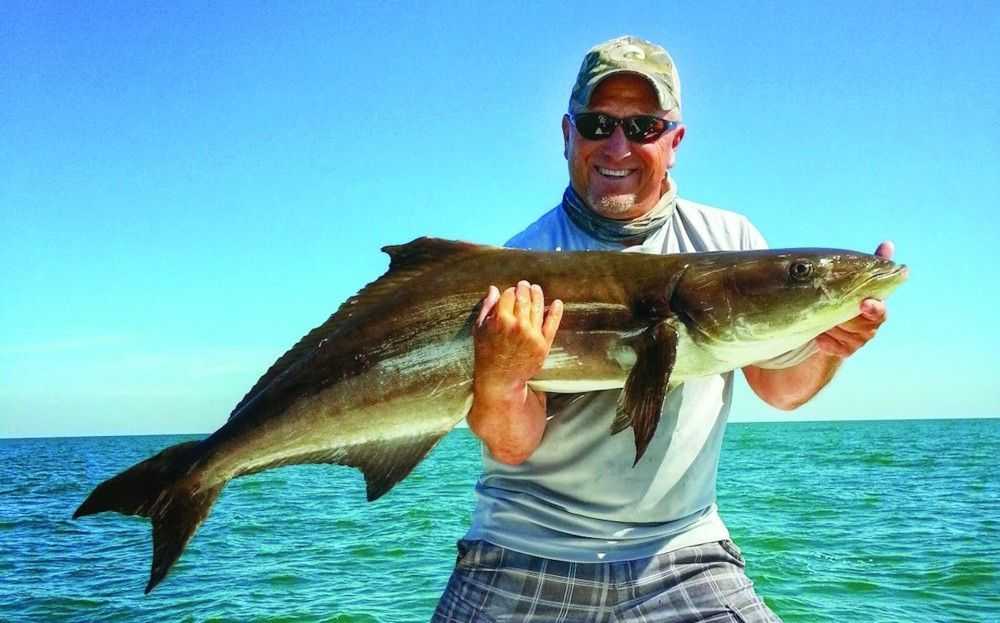By Greg and Bryan Watts:
The boat was still 50 yards from our next spot, but it was easy to see the marker buoy we were approaching was going to produce. It was a great feeling given the last half dozen had offered nothing. Our eyes were keen on the water surrounding the buoy, marking the channel at the mouth of a river with 30-foot water to its anchor.
Cobia was our fish of the day, and they were already in sight, their long bodies and flat heads easy to detect as they circled the surface around the man-made floating structure. It was mealtime, and we were ready to interrupt dinner.
These early spring cobia, with AKAs that include ling and lemonfish, can run anywhere from 10 to 40 pounds. We have to admit, cobia are just not real smart. In March and April, these Gulfwide coastal pelagics congregate more than usual and can be found in schools around channel markers and even cruise beaches as they migrate north. They’re anxious to feast on the baitfish, as spawning is not far in their future. Spring cobia are vulnerable to our baits, creating an angler’s dream.
Not being overly skittish of our boat, the fish allowed us to move into within 10 or 15 yards to start casting. Circling the buoy allowed for long casts to all sides. The fish were shallow for the most part, and even when we thought we had put them down the cobia could be found just 10 feet below. It was easy picking.
Our technique was simple and the tackle the same as we use for snook or big redfish. An Abu Garcia Revo Inshore baitcast reel spooled with 30-pound Stren Sonic braid with a 40-pound Berkley Trilene 100% Fluorocarbon leader. This is mounted on a Fenwick HMG 7-foot medium-heavy rod with a fast tip that’s ideal for both casting and fish management.
The cobia were suckers for a Berkley Gulp! 4-inch shrimp, either new penny or white or a black Gulp! 10-inch eel. Rigged on a ½-ounce jig head, the baits were easy to cast, gave a solid profile for the cobia to focus on and produced that wonderful Gulp! aroma and taste to seal the deal. Our casts were made beyond the buoy, and the baits simply retrieved like a swimbait close to the structure. Strikes were definitely not subtle.
If there are no buoys in the area, look for floating debris and a loitering ray. It’s the same principal of finding baitfish around the surface structure, whether trash or alive. When fishing for cobia along the beaches, look for rays. The cobia are attracted to crabs and small fish displaced by the ray’s disturbance on the bottom as they search for food. This is a common situation, one we are always on the lookout for.
A habit we learned long ago is to check the drag on our reels often. Cobia are generally strong muscled and strong willed; test for any tackle. Once hooked-up, we simply stay connected and let the fish tire in the open water.
Grilled cobia was on the weekend dinner menu at both Watts households.
